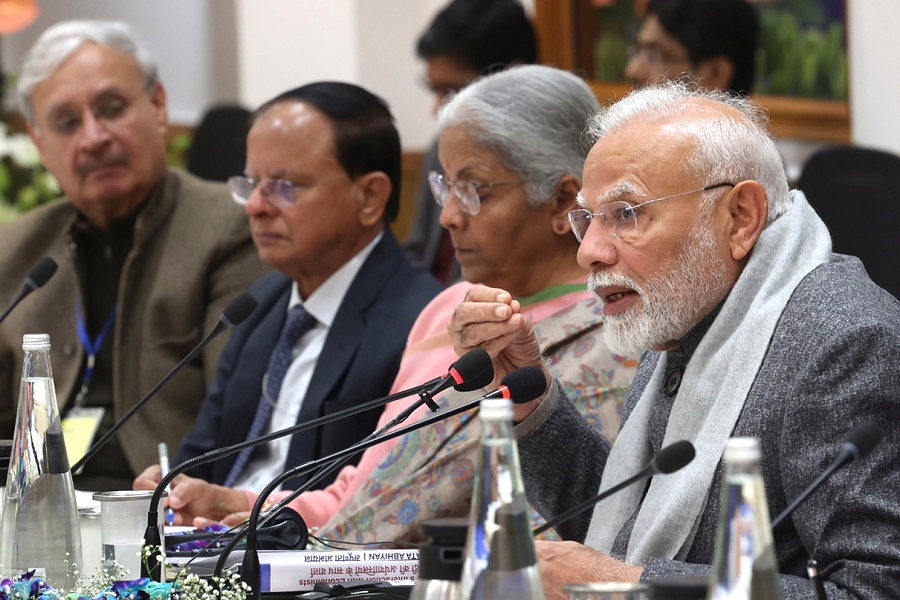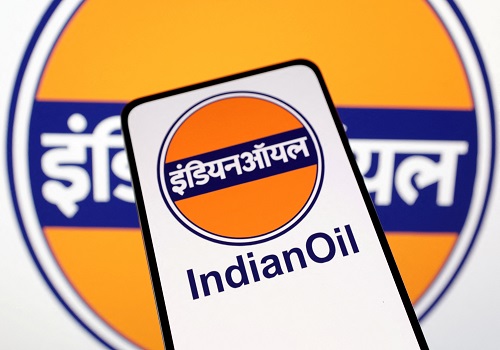Agri Commodity Technical Report 02 August 2022 - Geojit Financial Services

Follow us Now on Telegram ! Get daily 10 - 12 important updates on Business, Finance and Investment. Join our Telegram Channel
SPICES
• Sentiments were sanguine in the NCDEX spices complex on Monday. Jeera futures climbed to fresh record high on concerns over fall in production. Turmeric futures inched higher to end about one per cent up, while coriander trimmed initial gains to end session in green. Steady demand lend support.
• According to fourth advanced estimates by Gujarat government, jeera production is seen fall by 44.5 per cent to 221500 tonnes in 2021-22 on yoy basis, while that of coriander is seen at 208090 tonnes, down by 5.9 per cent during the same time period.
• The National Commodity & Derivatives Exchange has received approval from the Securities and Exchange Board of India to launch options in goods contracts on turmeric, jeera and coriander, it said in a circular. The options in goods contract on the three commodities expiring in Aug-Nov will be available for trading from 15 July. The transaction charge will be 30 rupees per 100,000 rupees of premium value. As per the contract specifications, the trading and delivery unit for turmeric and coriander is 5 tn each, while for jeera it is 3 tn. The options contract will be launched a day after the futures contract with the same underlying is launched. Upon the expiry of the contract, the outstanding open position shall result in compulsory delivery. The final settlement price and the expiry date are the same as the corresponding futures contract.
• Govt. sees spices output in 2021-22 at 10.9 million tonnes vs 10.8 million tonnes.
• The export of spices from India during 2021-22 declined nearly 13 per cent on year to 1,531,154 ton, according to data from the Spices Board India. In terms of value, exports dipped by about 1.25 per cent to 3,057,644.24 rupees. Export of chilli, turmeric, jeera, coriander, fenugreek declined, while that of pepper, cardamom, ginger and fennel rose.
• India exported 153,154 ton of turmeric in in FY 2021-22, down 16.70% on year. Coriander exports were down 15.16% on year at 48,658-ton, data showed.
• The exports of jeera during declined 27.28% on year to 216,996 ton. Export of small cardamom jumped by 63 per cent to 10,572 ton year on, while that of pepper rose 9.5 per cent.

COTTON
• UK-based Cotton Outlook has revised downward its estimate for global cotton production in 2022-23 (Aug-Jul) by 624,000 tn to 25.7 mln tn, the agency said in a report. The revision has been made as production in the US and Brazil is expected to be lower. Production in the US is seen lower due to severe drought, which is likely to affect the yield. Texas is the largest cotton-producing state in the US. Production in the US is seen at 3.1 mln tn compared with 3.5 mln tn projected in June. Production of cotton in India and China is seen steady at 6.0 mln tn and 5.8 mln tn, respectively. The agency has also lowered its estimate for global consumption in 2022-23 by 150,000 tn to 25.0 mln tn due to a fall in demand from Vietnam.
• India's 2022-23 (Jul-Jun) kharif acreage so far was down 2% from a year ago at 82.3 mln ha, the farm ministry's data showed. The area under cotton across the country in the 2022-23 (Jul-Jun) season was over 11.8 mln ha as of Thursday, up 5.3% from a year ago, data from the farm ministry showed. Sowing is completed in northern states and the acreage in Haryana, the top producer in north India, was down 5.5% on year at 650,500 ha. In Punjab, it fell 2.4% on year to 248,000 ha. Inadequate power supply for irrigation and non-availability of canal water during the initial sowing stage led to a drop in acreage in northern states, experts said. In Gujarat, the acreage was up at 2.45 mln ha, against 2.18 mln ha a year ago. In Maharashtra, the area under the crop increased 8.1% on year to 4.1 mln ha, while in Telangana, it was down 10.1% at 1.8 mln ha. The area under cotton is expected to increase this year, primarily because of lucrative returns and forecast of a normal southwest monsoon, market experts said. Sowing of the fibre crop in irrigated areas of north India typically starts in late April. It begins in June in the country's rain-fed regions. Around 70% of cotton acreage in India is dependent on monsoon rainfall. Gujarat is the top producer of cotton in India, followed by Maharashtra and Telangana. Together, Gujarat and Maharashtra account for 50-55% of the country's total production.
• According to the fourth advance estimates by Gujarat government, cotton production in the state is seen rising by two per cent in 2021-22 to 7363660 bales.
• The Cotton Association of India has revised downward its production estimate for the 2021-22 (Oct-Sep) marketing season to 31.5 mln bales (1 bale = 170 kg), from 32.4 mln bales projected a month ago, it said in a release. The cut in estimate can be attributed to some crop loss because of excess rains in November in the key producing states that hit quality of the crop. Of the total crop, 28.8 mln bales had arrived in markets across India till May. Estimate for exports in the current marketing year has been maintained at 4.0 mln bales. India shipped around 3.8 mln bales of cotton till May, the association said.The association has also lowered its estimate for domestic cotton consumption to 31.5 mln bales, while imports for the season are pegged at 1.5 mln bales. The ending stock for the 2021-22 season has now been estimated at 4.7 mln bales, as against 5.4 mln bales projected a month ago, the release said.

OTHERS
• As per official sources, National Agricultural Cooperative Marketing Federation of India Ltd. (NAFED) has procured 24,18,016 MT Chana as of 9th June, 2022. The States where procurement has been done are: Gujarat (558,642 MT, procurement closed), Maharashtra (NAFED-6,62,484 MT, procurement closed & FCI72,466 MT), Madhya Pradesh (8,05,000 MT), Rajasthan (1,60,586 MT), Karnataka (73,867 MT, procurement closed), Andhra Pradesh (71,353 MT) and UP (13,618 MT). Chana procurement is being done at the MSP of INR 5,230 per quintal. Total procurement target is 29 lakh MT.
• According to the recent report by Australian Bureau of Agricultural and Resource Economics and Sciences (ABARES), Chickpea sowing area in the country is estimated to decrease to mere 4,43,000 hectare, down by 28% from 616,000 hectares while production is likely to fall by 43% to 606,000 MT from 1.062 MMT this year.
• The Securities and Exchange Board of India has asked the National Commodity and Derivatives Exchange to not launch any new chana contracts on its platform till further notice, the market regulator said in a release on August 16, 2021.
• India’s guar gum exports increased in the month of May’2022 by 36.42% to 27,748 MT compared to 18,971 MT during previous month. However, the gum shipments were up by 46.27 % in May’2022 compared to the same period last year. Out of the total exported quantity, around 8541 MT (30.78%) bought by US, Russia bought 4,686 MT (16.89%), China 3,618 MT (13.04%), Germany 3,408 MT (12.28%). Export demand was driven by bullish crude oil prices. We expect Guar export in June’22 at 25,000-28,000 tonnes.
• India’s Guar split exports increased in the month of May’2022 by 731% to 5,347 MT as compared to 643 MT previous month. However, the guar split shipments down by 50.66% in May’22 compared to the same period last year at 10,838 MT. Out of the total exports, around 3,800 MT (71.07%) bought by China, US 860 MT (16.08%), We expect guar split export in June at 4,000-5,000 tonnes. Total guar exports in May’22 recorded up by 6% to 33,095 MT as compared to 31,178 MT previous year same period amid bullish crude oil prices and increase in oil rig count. However, cumulative exports till May’22 still up by 12% to 200284 MT as compared to previous year same period at 179386.
• The global production of natural rubber in June is recorded at 1.11 mln tn, up 3.8% from the same period a year ago, the Association of Natural Rubber Producing Countries said in its report. The global consumption of the commodity is projected up 5.8% on year amounting to 1.20 mln tn in June. Further, during the year 2022, the outlook for natural rubber market is expected to improve in terms of production and consumption.

OIL AND OILSEEDS
• India's 2022-23 (Jul-Jun) kharif acreage so far was down 2% from a year ago at 82.3 mln ha, the farm ministry's data showed on Friday. The lag was mainly due to a decline in sowing of key crops such as rice, maize and groundnut. The acreage under oilseeds was 16.4 mln ha as of today compared with 16.3 mln ha a year ago. Farmers have sown soybean across 11.46 mln ha this kharif season as of Friday, up 2 .5% from a year ago, the latest data from the farm ministry showed. Soybean acreage in Madhya Pradesh, the country's top producer, fell 2% on year to 4.8 mln ha, while in Maharashtra, the second-biggest producer, acreage rose 4.1% to 4.6 mln ha. The acreage rose 17.6% to 1.1 mln ha in Rajasthan, data showed.
• Farmers have sown soybean across 11.8 mln ha this kharif season as of today, down 2% on year, according to a survey conducted by the Soybean Processors Association of India. According to the farm ministry, soybean acreage is 11.5 mln ha so far in the ongoing season. In Madhya Pradesh, the largest producer of the oilseed in the country, soybean acreage is pegged at 5.0 mln ha. Acreage in second largest grower Maharashtra stood at 4.7 mln ha, data provided by the association showed. "In some districts of Maharashtra and Madhya Pradesh, soybean fields are facing water logging due to continuous rains and this may result in partial crop damage, or even total loss in some areas," the association said. Since Jun 1-Jul 29, India has received 465.6 mm rainfall, 9% above the normal level of 428.3 mm for the period.
• China's securities regulator has approved trading of soybean and soyoil options on the Dalian Commodity Exchange, it said on Friday. Options trading for the Dalian exchange's soybean contracts and its soyoil contract will begin on Aug. 8, the China Securities Regulatory Commission (CSRC) said in a statement. This adds to the exchange's existing agriculture products options such as soybean meal, corn and palm olein. The Dalian exchange also has options for other contracts such as iron ore and liquefied petroleum gas. China is the world's top importer of soybeans and largest consumer of various raw materials.
• The government had on Jul 15 issued guidelines to prevent misdeclaration of net quantity on edible oil by manufacturers, packers and importers and to ensure packaging standards, a notification by the Ministry of Consumer Affairs, Food and Public Distribution said. The guidelines have been issued after the Solvent Extractors' Association of India had brought to the ministry's notice how some edible oil companies were packing oil in 1 ltr bottles or pouches at higher temperature and hence offering lesser quantity to consumers. The edible oil companies have also been told to avoid declaring temperature to protect the interest of the consumers as consumers could be fooled when the packaging mentions higher temperature. Manufacturers of Vanaspati, ghee, butter oil and non-edible vegetable oils will also have to mention the volume or weight of the content in the package, the notification said.
• India's exports of oilmeals more than doubled on year to 431,840 tn in June, according to data released by The Solvent Extractors' Association of India today. During the first three months of the financial year that began on Apr 1, exports of oilmeals rose 39% on year to 1.0 mln tn. The rise in exports of oilmeals was mainly due to the surge in exports of mustard meal. Mustard oil exports surged to 706,904 tn in Apr-Jun from 384,807 tn in the year-ago period. However, in case of soymeal, exports remained subdued as "India is out priced in the international market," the association said in a release. Exports of soymeal plunged to 76,093 tn in Apr-Jun compared with 118,057 tn a year ago. During AprJun, South Korea imported 338,800 tn oilmeals from India, compared with 252,063 tn a year ago, and Vietnam imported 184,423 tn against 114,934 tn a year ago, the association said. During the first three months of the new fiscal, 408,664 tn oilmeals were exported from Kandla port, and 248,136 tn from Mundra port. Exports from Mumbai port, including the Jawaharlal Nehru Port Trust, were at 57,140 tn, 108,619 tn were shipped from Kolkata port and 198,706 tn from other ports, the association said.
• According to the government's third advance estimate for 2021-22 (Jul-Jun), soybean production has been estimated at 13.83 mln tn.India's vegetable oil imports in May fell 15% on year to 1.1 mln tn, The Solvent Extractors' Association of India said. The fall in imports was primarily due to supply constraints in the wake of the Russia-Ukraine geopolitical tension. However, the imports are likely to improve in the near term, with Indonesia lifting the export ban on palm oil from May 23. During Nov-May, imports of vegetable oil were at 7.8 mln tn, as against 7.7 mln tn a year ago. The vegetable oil basket consists of edible and non-edible oils. Edible oil imports were at 1.0 mln tn in May, against 1.2 mln tn a year ago. However, for Nov-May, these imports were at 7.55 mln tn, as against 7.48 mln tn in the year-ago period. In May, about 409,027 tn of crude palm oil was imported, against 755,633 tn during the same month last year. As of Jun 1, about 484,000 tn of edible oil was at ports, against 570,000 tn a year ago, while 1.8 mln tn was in the pipeline, against 1.4 mln tn during the same period last year.
• The US Department of Agriculture in its June report has projected global oilseed output for 2022-23 (May-Apr) to fall marginally to 646.8 mln tn from 647.2 mln tn estimated the previous month. The agency attributed the fall in output to projection of lower sunflower seed crop in Ukraine. However, soybean production estimate has been raised for Ukraine based on reports of progress of planting, while mus tard seed output has been raised for Australia on the back of higher harvested area, both of which cushioned a sharp fall in global production outlook. The agency has projected global soybean output to rise by 680,000 tn to 395.4 mln tn. Brazil's 2022-23 soybean crop is estimated at a record 149 mln tn, and Argentina's crop is seen at 51 mln tn, unchanged from the May estimates. The agency has scaled up its estimate for global ending stocks for 2022-23 to 100.5 mln tn, up from 99.6 mln tn estimated in May.Estimate for global soyoil production for 2022-23 has also been revised upwards to 61.5 mln tn from 61.4 mln tn projected in the previous month. The department projected global soymeal output for 2022-23 at 256.9 mln tn, up from 256.5 mln tn last month. The estimate for global exports of soymeal in 2022-23 is higher at 70.1 mln tn, compared with 69.8 mln tn projected in May, it said. Soymeal is a derivative of soybean, manufactured by crushing the oilseed, and is mainly used in producing poultry feed.
• The government has allowed import of 2 mln tn of crude soyoil and crude sunflower oil per year each at nil duty under the tariff rate quota, the finance ministry said in a release. Imports made against the tariff rate quota will be effective from Wednesday till Mar 31, 2024.
• The Centre has extended stockholding limits on edible oils and oilseeds by six months till Dec 31 in a bid to check hoarding and check prices of the commodities in domestic markets, a government release said. In February, the Centre had imposed stockholding limits till Jun 30.
• India's mustard seed production in the crop year 2021-22 (Jul-Jun) is seen 29% higher at an all-time high of 10.95 mln tn, the Central Organisation for Oil Industry & Trade said in a release. In the previous year, mustard seed production was at 8.5 mln tn, according to the release. The area under has been pegged at 8.7 mln ha, and the average yield is estimated at 1.3 tn per ha.
• With the shortage of edible oil supply from imports due to the crisis in Ukraine, the Soybean Processors Association of India has recommended measures to augment the supply and cool down prices. The agency estimates a shortfall of edible oil supply from imports due to the war of approximately 200,000 tn a month of sunflower oil, it said in a note.
• The National Commodity & Derivatives Exchange will launch future contracts in refined castor oil on Mar 21, the bourse said in a circular. According to the contract specification the commodity will have trading unit of 2 tn, with the maximum order size of 200 tn. The contract will be settled in cash. The open interest threshold level to attract concentration margin in the commodity will be 17,900 tn.
• The government cut agriculture cess on crude palm oil and extended the lower customs duty on edible oils by six months till Sep 30 to cool domestic prices. The government cut Agriculture Infrastructure and Development Cess on crude palm oil to 5.0% from 7.5%, a finance ministry notification said. The Centre had in October slashed import duty on key edible oils till Mar 31. This has now been extended till Sep 30, the notification said.
To Read Complete Report & Disclaimer Click Here
For More Geojit Financial Services Ltd Disclaimer https://www.geojit.com/disclaimer
SEBI Registration Number: INH200000345
Views express by all participants are for information & academic purpose only. Kindly read disclaimer before referring below views. Click Here For Disclaimer












 320-x-100_uti_gold.jpg" alt="Advertisement">
320-x-100_uti_gold.jpg" alt="Advertisement">












